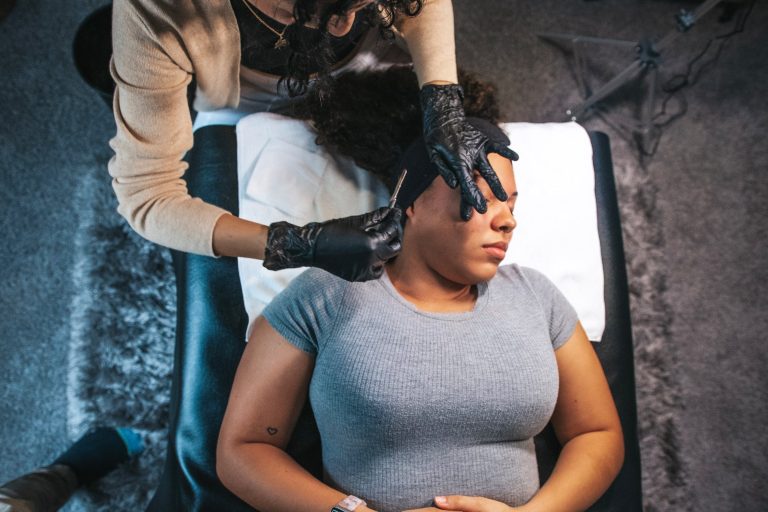Share this post
If you want smoother and brighter-looking skin, consider dermaplaning. Dr. Joshua Zeichner, an associate professor of dermatology at Mount Sinai Hospital in New York City, told Insider that dermaplaning is a manual exfoliation process performed using a sharp blade against the skin. Zeichner adds that dermaplaning removes dead cells and hair by shaving away tiny hairs on the cheek and jawline while scraping flaky skin away.
The cost of dermaplaning varies based on factors, like location, duration of the procedure, regularity, and whether it’s done by a dermatologist or an esthetician. According to a report on AEDIT, the price range of dermaplaning is between $75 and $250. If you’re looking to build an intense skincare routine, dermaplaning should be on your list. This skin care process provides multiple benefits, including a glowing complexion, but there are risks too. Here’s what dermatologists are saying about dermaplaning.
Dermaplaning Makes Your Skin Radiant Instantly
Individuals with peach fuzz benefit the most from dermaplaning, as it helps get rid of their hair, according to Dr. Cameron Rokhsar, a dermatologist at Mount Sinai Hospital. Dr. Zeichner also says that doing so can make beauty products like foundation appear less cakey. Dermaplaning allows light to reflect better off the skin surface, hence brightening your complexion. Since dermaplaning removes dead cells, it leaves your skin feeling soft and clean, restoring a youthful glow. Your skin will look like an even, smooth canvas, ideal for putting on makeup.
Face Shaving Boosts Collagen and Reduce Fine Lines
Regular facial dermaplaning or dermablading is one of the best ways to boost collagen production naturally. Like microneedling, dermaplaning causes low-grade trauma to the skin, simulating a wound healing response. This stimulates collagen production, according to Dr. Zeichner. Increased collagen production strengthens the skin and improves elasticity, making your skin appear smooth and free of acne. Collagen also has anti-aging effects as it makes your skin appear plump, thus reducing the appearance of fine lines and wrinkles.
Because dermaplaning involves removing the top layer of the skin, it also triggers the body to produce new skin cells. These new cells take the place of old ones, meaning damaged cells or those with high pigment will be replaced without causing other skin issues. This process makes dermaplaning ideal to address hyperpigmentation. Anyone struggling with excessive pigmentation of the skin has visible patches on the skin appear darker than the surrounding skin. Though hyperpigmentation is harmless, you may consider regular dermaplaning to maintain a smooth and an even skin tone.
Dermaplaning Poses Risks
Too often, women avoid shaving their face because they believe the hair will grow back thicker. However, that’s not true. Dr. Rokhsar and Zeichner say when done correctly, dermaplaning is safe and provides satisfactory results instantly. However, doing it too much may lead to skin irritation, infection, inflammation, and scarring. So, how often should you dermaplane to enjoy the best results? Dermatologists recommend dermaplaning every three to four weeks. And while you can dermaplane at home using the right blade and beauty products, it’s always wise to find a dermatologist to do it safely.
Dermaplaning has become a popular skincare procedure, with over 3 billion views on TikTok. This process entails removing tiny hairs and dead cells on the skin. Doing so stimulates the production of collagen and new cells, thus making your skin appear smooth and radiant. Dermaplaning also gets rid of fine lines and wrinkles, and addresses skin issues like hyperpigmentation. However, be cautious not to dermaplane too much to avoid irritation, infection, and scarring.

Isreal olabanji a dental assistant and public health professionals and has years of experience in assisting the dentist with all sorts of dental issues.
We regularly post timely and trustworthy medical information and news on Fitness, Dental care, Recipes, Child health, obstetrics, and more.

